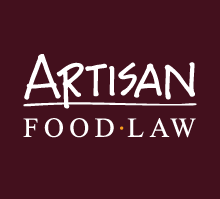Food Law Framework: Introduction
The UK, as a member of the EU, had a logical and clear food law framework. On 31 December 2020 this changed overnight. The principles remain, but their application is a different matter.
The Food Safety Act 1990 used to be the primary source of domestic food law in the UK while general food law Regulation (EC) 178/2002 was the primary source within the EU. Following Brexit, both are now an equal part of domestic law, although the latter will continue to develop as a primary source of EU food law for the remaining 27 Member States.
On IP completion day, 31 December 2020, a ‘snapshot’ of general food law Regulation (EC) 178/2002 was taken as it stood at that moment. It is the version held on www.legislation.gov.uk to which we must now refer.
The general food law Regulation (EC) 178/2002 applies to food and feed. It introduced new requirements concerning import, export, safety, traceability and withdrawal of products. The aim was to establish a comprehensive framework of food law from ‘farm to fork’[1] having the following objective:
This Regulation provides the basis for the assurance of a high level of protection of human health and consumers' interest in relation to food, taking into account in particular the diversity in the supply of food including traditional products, whilst ensuring the effective functioning of the internal market.[2]
Chapter III of Regulation (EC) 178/2002 established the European Food Safety Authority (EFSA). The General Food Law (Amendment etc.) (EU Exit) Regulations 2019[3] repeal Chapter III and make other amendments designed to maintain operability of Regulation (EC) 178/2002 under domestic UK law. The functions of the EFSA are now largely undertaken by the Food Standards Agency (FSA) and other UK bodies or have ceased to be undertaken.
The enforcement arrangements for Regulation 178/2002 remain to be found in The Food Safety and Hygiene (England) Regulations 2013.[4]
Regulation (EC) 178/2002 should still be read in conjunction with guidance issued by the Commission in 2010[5] on Articles 11, 12 and 17 to 20 and by the Food Standards Agency in 2019[6] on compliance with Articles 14, 16, 18 and 19 of Regulation (EC) 178/2002 covering food safety, traceability and the need to notify, withdraw and/or recall products not conforming with the food safety requirements. The Commission’s guidance remains a useful aid to interpretation of the law, but in the event of any conflict FSA guidance should be followed.
Regulation (EC) 178/2002 defines ‘food law’ to include measures that extend beyond food and include, for example, all measures relating to materials and substances in contact with food or which may have a direct or indirect impact on the safety of food.[7] The definitions of ‘food’ and ‘feed’ are set out in Article 2 and Article 3(4) respectively. Article 2 provides:
For the purposes of this Regulation, ‘food’ (or ‘foodstuff’) means any substance or product, whether processed, partially processed or unprocessed, intended to be, or reasonably expected to be ingested by humans.
‘Food’ includes drink, chewing gum and any substance, including water, intentionally incorporated into the food during its manufacture, preparation or treatment. It includes water after the point of compliance as defined in Article 6 of Directive 98/83/EC and without prejudice to the requirements of Directives 80/778/EEC and 98/83/EC.
‘Food’ shall not include:
(a) feed;
(b) live animals unless they are prepared for placing on the market for human consumption
(c) plants prior to harvesting;
(d) medicinal products within the meaning of Council Directives 65/65/EEC and 92/73/EEC;
(e) cosmetics within the meaning of Council Directive 76/768/EEC;
(f) tobacco and tobacco products within the meaning of Council Directive 89/622/EEC;
(g) narcotic or psychotropic substances within the meaning of the United Nations Single Convention on Narcotic Drugs, 1961, and the United Nations Convention on Psychotropic Substances, 1971;
(h) residues and contaminants.
Oysters and other live shellfish fall within the definition of ‘food’ where, in accordance with paragraph (b) above, they are prepared for placing on the market for human consumption.
Where a product falls within the definition of both a ‘food’ and a ‘medicinal product’ within the meaning of paragraph (d) above, the law specific to medicinal products alone applies.[8] It has been held that a garlic capsule is not a medicinal product.[9]
In the case of ‘feed’ Article 3(1) provides:
‘(F)eed’ (or ‘feedingstuff’) means any substance or product, including additives, whether processed, partially processed or unprocessed, intended to be used for oral feeding to animals.
The primary sources of food law having been established and the definitions of ‘food’, ‘feed’ and ‘food law’ identified, the foundation for the food law framework has been laid.
The other components of the framework, next considered, comprise:
- General objectives and principles.
- Principles of transparency.
- General food trade obligations.
- General food law requirements.
- Responsibilities for food.
[1] White Paper on Food Safety COM (1999) 719
[3] SI 2019/641
[4] SI 2013/2996
[5] European Commission, Guidance on the Implementation of Articles 11, 12, 16, 17, 18, 19 and 20 of Regulation (EC) 178/2002 on General Food Law, 26 January 2010
[6] Food Standards Agency, Guidance Notes for Food Business Operators on Food Safety, Traceability, Product Withdrawal and Recall, March 2019
[7] Regulation (EC) 178/2002, Article 3(1)
[8] HLH Warenvertreibs GmbH and Orthica BV v Germany (Joined Cases C-211/03, C-299/03, C-316/03 to C-318/03) [2005] ECR I-5186
[9] Commission v Germany (Case C-319/05) [2007] ECR I-9841; [2008] 1 CMLR 36




